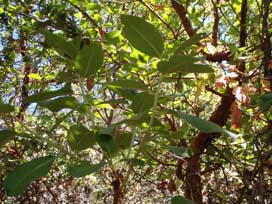
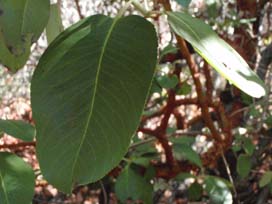
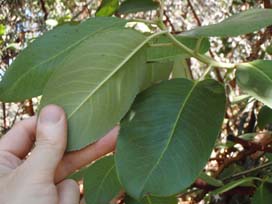
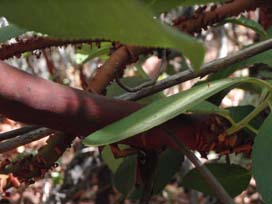
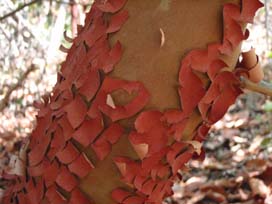
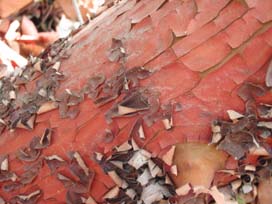
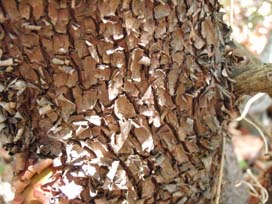
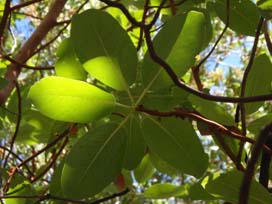
Pacific madrone
Arbutus menziesii
Family: Ericaceae.
Type: Evergreen small tree or large shrub.
Branching: Alternate.
Leaves: Simple leaves that are long and oval. They can be entire, or can have fine teeth on the margins; this is variable. Leaf upper surface is dark green, under surface is paler.
Twig: Bark is very distinctive. It is red that peels away, tan or olive green underneath. That underlayer is very smooth, and feels cool to the touch. Bark at the base is brown, with tiny scales, like brown alligator skin; on large trees the red and tan pattern may be seen only on the younger branches.
Fruit & Flower: Inflorescences and fruits hang, similarly to manzanita.
Miscellaneous: In the same family as huckleberry and manzanita. It can be hard to tell that madrone is evergreen, because it will often drop all of its old leaves; but it has leaves year-round (it does not drop last year's leaves until this year's leaves come in). It is slightly shade-tolerant; it is usually found in fairly open, sunny sites where temperatures are not extreme. It is found up through British Columbia in areas like rocky outcrops. When madrone is found in more forested areas, it indicates that that site was more open in the past, and that madrone is getting closed out by more shade-tolerant species. They are not found in moist soil, and require somewhat acidic soil (such as sites with needles mixed into the soil).
 |
 |
 |
 |
 |
 |
 |
 |